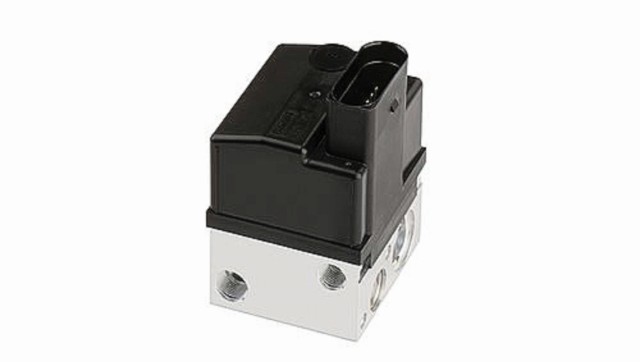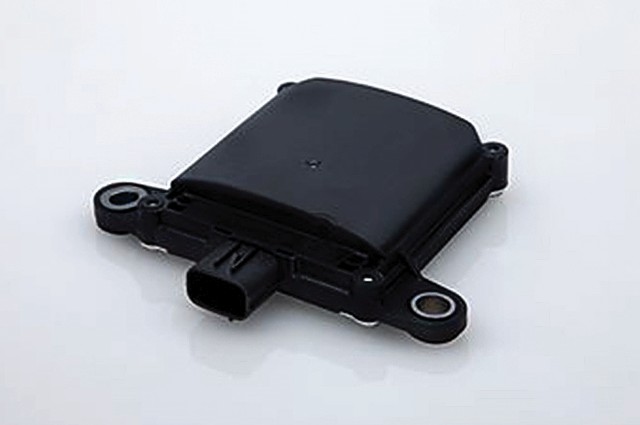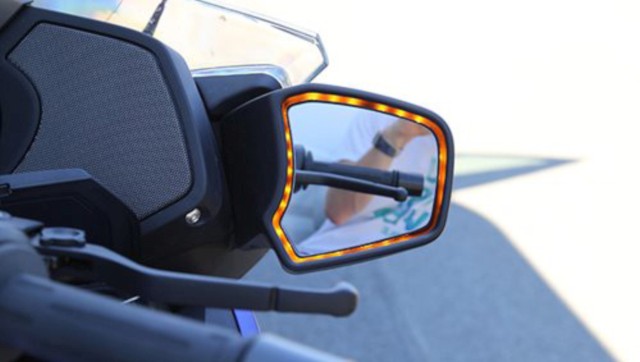We had an opportunity to interact with Alexander Klotz, the head of Continental’s Technical Center India (TCI) and the in-house R&D Center of Continental Corporation, about what safety technologies we may expect in India and their acceptance and integration.
Interviewed by: Jim Gorde
Photos: Continental AG
Bike India (BI): Continental Technologies are definitely breaking new ground worldwide when it comes to vehicle safety technology; however, the situation in India is very different. What are your top priorities for the Indian market when it comes to safety technology implementation?
Alexander Klotz (AK): Continental, being at the forefront of vehicle safety technology, are fully equipped to support the market needs. We believe that safety technologies shouldn’t be treated as a luxury that only comes with premium vehicles. As a technology company, we understand that each market is different from the other. Which is why we strongly adhere to our strategy, “In the Market, for the Market”, localizing the entire value chain.
Often technologies are adapted to our customer requirements, unique to the market. Safety is a universal right, but this, too, has its fair share of challenges. Price sensitivity has always been a reality in India. Equipping the vehicles in India with safe technologies will certainly have a cost implication in the initial stages. However, the impending need of safety features in vehicles, driven primarily by the government mandates, have been a major boost. From April 2019, for all two-wheelers in India that have displacement more than or equal to 125 cc, it’s mandatory to have an anti-lock brake system (ABS). Additionally, two-wheelers with displacement less than 125 cc will compulsorily need to have combined braking system or CBS.
BI: Are there any safety technologies that have been developed specifically on witnessing the traffic scenario and use patterns in India?
AK: As I mentioned earlier, we’re fully equipped to support the Indian market. Continental believe that safe, clean, and connected vehicles are the future for mobility world. However, India is a highly populous country and traffic system is a major concern and our technologies are always impactful when it comes to easing traffic congestion and addressing the criticalities of urban mobility. Continental’s MiniMAB, one-channel ABS for motorcycles, is a small and lightweight solution for scooters and small motorcycles. The system prevents the front wheel from locking up and thus avoids a fall or the vehicle becoming unstable. Additionally, our advanced driver assistance functions, blind-spot detection and lane-change assist, can monitor blind-spot areas and indicate hazardous lane changes. The rearward facing radar sensor monitors the road area behind and next to the motorcycle and warns if a lane change cannot be recommended.
We, at Continental, have several solutions for traffic-related crises; however, the spectrum required for these functionalities to work needs more support from the legislation. Our responsibility is to support the market with these advanced mobility technologies. We have done this in other countries and we are doing it in India, too. I don’t believe that all can be done by legislation immediately as the overall framework takes time. However, with increasing awareness coupled with the right solution, the full-fledged use of our technologies on India roads is not a distant dream.
BI: To what extent are your domestic suppliers adopting the Continental suite of systems?
AK: At Continental, we’re closely working with our suppliers. In our endeavour to provide best-in-class support to our customers, we induct the suppliers thoroughly on our supply chain processes and they are properly supported with the basic rules to meet the business expectations. We understand localization is important to meet the specific technology and cost requirements of the Indian market. Continental is doing everything possible to make technologies cost-effective.
Additionally, I would like to mention that Continental India, besides its sophisticated production facilities, also contributes to the corporation’s global R&D footprint, with active R&D carried out by both the business units present in India and at TCI, set up in 2009.
As mentioned earlier, the centre has been growing rapidly in head count and complexity of work. TCI today supports end-to-end product development from requirement engineering to vehicle build-up and testing in specific areas encompassing software, electronics, and mechanics. An example of their level of engineering depth is the one-channel ABS solution for two-wheelers and highly sophisticated technologies for domains such as Advanced Driver Assistance Systems.

BI: Are there any critical technologies you feel should become mainstream with greater acceptance by the major manufacturers?
AK: Yes, we believe ESC and autonomous emergency brake (AEB) need to be accepted and mandated, too, and we expect it to happen by 2022-23. Having said that, the OEMs and suppliers are aware of this scenario and working closely to meet this target. The technologies are available in India and are active safety features that will have a huge impact on reducing road crashes and collisions. In simple terms, ESC is an anti-skid technology that uses sensors continuously to monitor the stability of the vehicle. On the other hand, AEB continuously monitors the road and helps apply the brake autonomously in a situation of obstruction or crash. Overall, we’re on the right path and India is looking forward to major road safety norms.

BI: To what extent will 5G connectivity have an impact on the availability and function of new connected systems? What sort of horizon do you look see for the implementation when it comes to automotive safety in India?
AK: Yes, a reliable source of 5G connectivity can dramatically impact the capabilities of connected vehicles. In this era, most of the vehicles are connected and work closely together with in-vehicle systems. 5G will play a significant role in enabling vehicle-to-vehicle and vehicle-to-infrastructure communication at a pace and capacity that was not possible with previous networks. We already have a technology in place for this transformation, Continental’s Hybrid V2X solution integrates technologies for 4G and 5G network access, Dedicated Short Range Communication (DSRC) and Cellular-V2X (C-V2X) communication. This helps vehicle manufacturers to overcome a big challenge when deploying V2X on a global scale, some regions prefer the established DSRC and others lean towards the upcoming Cellular-V2X standard. With our hybrid V2X solution, the same hardware and software platform can be used to support either communication standard, reducing cost and complexity for a global application of V2X communication.
In India, the buzz around such advanced technologies is making its way. I believe the focus should be on safety technologies first, then slowly steering towards intelligent mobility solutions so that we can create an ecosystem that will act efficiently and, hence, allow integration of technology with the existing infrastructure. We have to take one step at a time to ward off road safety threats.

Also read: Blog – Braking News



Leave a Reply